Are you considering a graphics tablet for photo editing? Has your mouse finally got to you, leaving you tired and/or with a serious case of carpal tunnel syndrome or are you just feeling like an outcast because all of your photographer/artist friends swear it’s the best thing since sliced bread and you’re still mousing around?
If this is you or you’re just curious about these devices, please read on, ’cause I go deep into graphics tablet territory!
What is a graphics tablet?
A graphics tablet (a.k.a pen tablet or digitizing tablet), just like a mouse, is an alternative input device that allows the user to interact with a computer using a stylus. It provides a more natural input for activities like photo retouching, drawing and digital painting because it emulates the way you draw with pencils on paper. The device consists of two main parts: a flat surface that is mapped to your screen and a stylus. Some even include a cordless mouse too that is used on the tablet’s drawing surface (handy for those more prone to “mouse withdrawal symptoms”).
These input devices come in a few different sizes ranging from an active area of roughly 6×4″ (15x10cm) to 13×8″ (32x20cm) or beyond. Please note that the actual device will be larger than the active area, something to keep in mind when choosing your graphics tablet.
Who uses these devices?
Graphics tablets are used mostly by people in creative industries for their ease of use, higher productivity, feature set and creative freedom they provide, but their fan base is growing among regular non-creative professionals since they are more intuitive and ergonomic, offering for a more pleasant experience for those not only wanting to reduce the chance of developing repetitive strain injuries but especially for individuals who already have carpal tunnel syndrome, for example.

What are the benefits of using a graphics tablet?
There are several benefits of using a graphics tablet a few of which I’ll talk about here (please note, some are personal and might not be the same for everyone).
Sense of connection: For a creative professional like myself, using a tablet has changed the way I interact with my graphics applications, specifically Photoshop. I feel a certain “disconnect” from the digital platform I’m working on (computer and applications) when using a mouse, but my graphics tablet, for some reason, provides me with a much more symbiotic experience, it’s like digital realm and human-being just merge, which creates a more emotional connection to my work because it feels more organic and allows for extremely fine artistic control and fluid motion. I know this sounds a bit on the romantic/tech-porn side but for me personally, this is huge and impacts my work in a significant way.
Creative expression: Pressure and tilt sensitivity are two amazing features that most good graphics tablets have that allow for perfect translation of pressure and tilt movements from your pen to your document. The creative freedom this provides is huge. In programs like Photoshop you have a plethora of settings (a multi-page article could be written on this alone) that you can take advantage of to suit your creative vision but for the sake of simplicity and as a mere example let’s just say that by applying more pressure to your graphics tablet will result in wider brush strokes while putting less muscle into it will produce thinner strokes.
Some manufacturers like Wacom also have touch capabilities built in to their tablets which allows for all those gestures most of us have become so accustomed to with our smartphones, like using two fingers to zoom in/out and rotate, among others. This along with customizable hot-key buttons is frickin’ awesome!
Productivity/efficiency: these are big boy buzzwords and if you are an independent professional, being able to cut the time you take to get the job done in half means more money in your pocket. If you work for a company you’ll be seen as a high valued employee by your boss… which could also mean more money in your pocket. Or maybe not, but you’ll still rock nonetheless!
I, and everyone I know who uses a tablet, can get more done in less time. Period.
Less fatigue/injury prevention/relief: while mice are the culprit in many cases of repetitive strain injuries, a tablet brings relief to those already suffering and can at the same time serve as a prophylactic to those still in line. Also, fatigue soon sets in when making a digital painting or doing heavy Photoshop work with a mouse!
Device placement: want to sit with your tablet on your lap, on the couch, in bed or even in any other position that’s comfortable for you? No problem, you can certainly do that, even though the standard position is to lie flat on your desk.
Cursor positioning: this one isn’t really a deal breaker but nevertheless worth mentioning. Tablets are absolute positioning devices while mice are of the relative positioning variety. Simply put, this means is that you may have to move your mouse several times to get the cursor from one side of the screen to the other. With tablets all you have to do is just place your pen on the device’s surface and your cursor position will be mapped precisely to your screen.
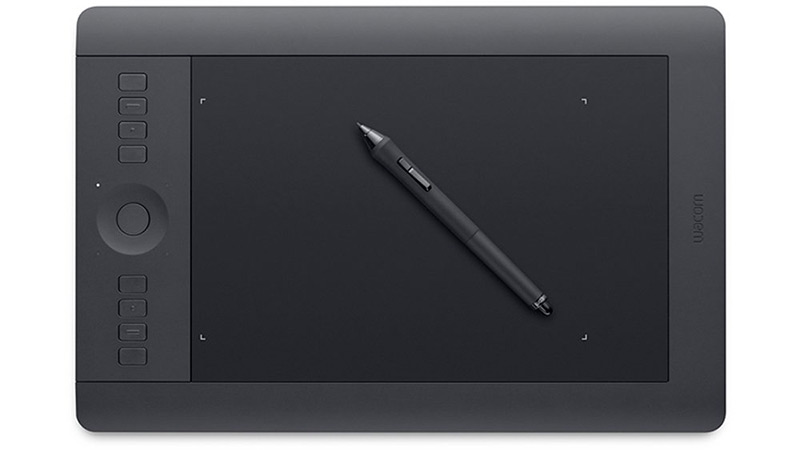
My personal experience
I have been using a Wacom Graphics tablet for about 8 years now. The degree to which it has impacted my Photoshop work is so high that I just couldn’t go back to using a mouse.
But my old transparent single button mouse is still my preferred input device for most other everyday tasks, like email, browsing the internet, etc. Some graphics tablet users use these devices for all computer work which is perfectly fine because they perform all the functions of a regular mouse like clicking, pointing, right clicking, double clicking, drag and drop etc.
What I do and don´t use my tablet for
Photoshop: I use my Wacom graphics tablet for all my Photoshop stuff because it makes my work so much easier and fun and just gives me that great feeling of human to pixel connection (similar to how painters feel the connection to their brushes, painting surface and paints). As an artist this just goes a long way, at least for me. Masking, making selections, painting etc with a graphics tablet is an amazing experience. I love it!
Lightroom: although Lightroom is (but not only) a photo editing application I don’t use my graphics tablet with this program since the vast majority of it’s functions are of the point, click and drag variety. To me, the extra sensitivity doesn’t bring much to the table with LR.
Can you use a tablet with Lightroom? Hell yeah! I know a few people who sure do and enjoy every bit of it. It’s just not my cup of tea.
Illustrator/Indesign: I don’t use Illustrator or Indesign much anymore but when I do, I’m mousing it! Here, even more so than with Lightroom, the extra sensitivity just gets in the way and doesn’t provide me with the best experience. For the way i work with vectors and text, a mouse just seems to be a better tool for the job, so to speak. For many people though, Adobe Illustrator and a graphics tablet is the perfect marriage.
Of course with a Wacom tablet (I’m sure with other brands too) you can define different settings for separate programs so you can adjust them individually according to how you work with each.
Who should consider buying a graphics tablet?
I love my graphics tablet and as much as I’d like to encourage all photographers and creative professionals to run out and buy one, the truth is, not everyone needs one.
If you find that you have a workflow that is based on batch processing in Lightroom and use Photoshop only for minor editing, then I doubt you will get enough use out of a graphics tablet to justify the price.
On the other hand, if like myself, you are a photographer or digital artist who’s work warrants for a great deal of Photoshop work or (any other) painting software like Corel Painter, I highly recommend getting a good graphics tablet. As a professional it’s one of the best investments you can make that will not only improve the quality of your work but also your physical wellbeing, especially if you live in front of your computer.
I would also recommend a graphics tablet, or other mouse alternative for that matter, to anyone suffering from a repetitive strain injury, creative professional or not. Many have found relief by using them, so it might be worth considering.
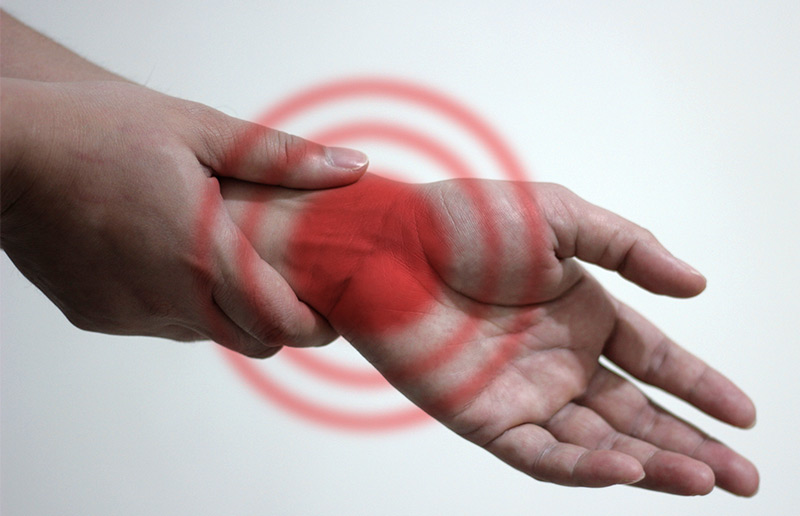
Are they easy to use?
As I have already mentioned, the fact that tablets are absolute positioning devices, hand-eye coordination is different than with a mouse and this takes some getting used to, which in my opinion, is the biggest hurdle to overcome.
In life there is a learning curve to almost everything and using a graphics tablet is no exception. Some people will travel this curve at a faster pace than others, but I believe that if the motivation and willingness is there, then anywhere from a few days to 3 weeks should be enough to feel very comfortable with one of these puppies.
It took me about 10 days to master my tablet and to decide that all Photoshop work would, from that point forward, be produced using my beloved Wacom.
Well, this is my lowdown on graphics tablets and I hope it helped those who are on the fence trying to decide whether or not to get one.
I’d love to hear from you guys, so let me know down in the comment section what you use, what your experience is, how these devices have benefited you etc. Of course questions are more than welcome!
Cheers!
Nick
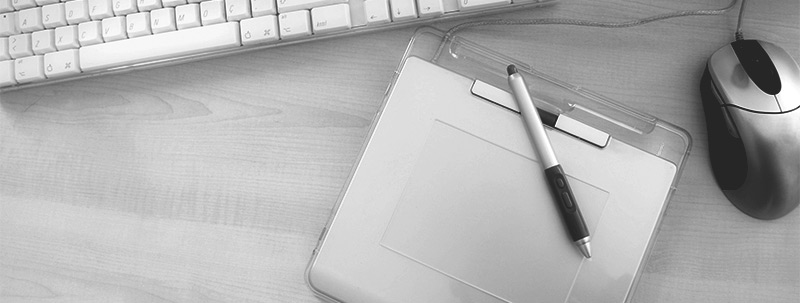
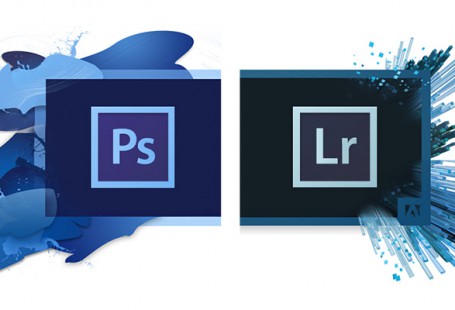

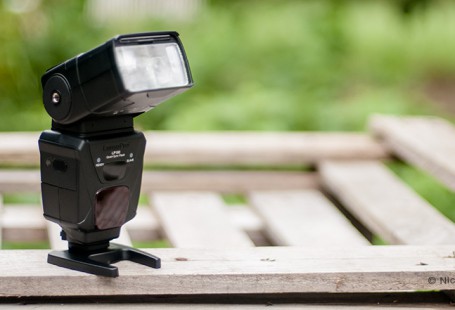
11 comments: On Do I need a graphics tablet for photo editing?
As we speak my back really hurts because I have been seated all afternoon editing photos on Photoshop…. I was definitely mousing 🙁
A graphic tablet sounds like a dream come true. I read this and fantasized about pairing a graphic tablet with the Keeker device !! Would be amazing. I love this informative post!
Also I think I’ll be spending more time on your amazing website as I will looking up great tips on photo editing. Thank you.
You won’t believe how much a graphics tablet can help! I would recommend one from Wacom, they make the best tablets out there and they have several models available, one of which will probably fit your budget.
Thanks for stopping by and sharing your experience.
Don’t know much about a graphics tablets, so I found it an interesting read. I can see how it would benefit someone in a creative career or with a repetitive strain injury.
My son is mad on drawing and likes to use Paint and Photoshop, think he is going to be a designer when he grows up! I was thinking of getting him one for Christmas but he is only 7 so don’t know if he is too young for one yet.
Hi Jenny,
If your son is already using a computer and dabbling in Photoshop then a graphics tablet should just come naturally to him and could really have a positive effect on his development.
Having said that, I would recommend a cheap one for now (maybe even a second hand one) since your son will not be taking advantage of all the bells and whistles of better quality tablets.
I used to have a graphics tablet. It really did give me the ability to create better graphics and drawings on the computer. Much more accuracy than using the mouse. I think all artists should own one of these. They’re awesome!
I’m thinking of getting myself a new one in the not too distant future. I still like to create my own graphics sometimes.
Totally agree! Accuracy is one of the strongest points of a graphics tablet.
I’m still using an Intuos3 (still works fine) but starting to suffer from gear lust and I’m already looking at those new sexy features the Intuos Pro boasts 🙂
Very good in depth article, I actually think that even if you don’t use it as much as that, you always will benefit from using a cheaper similar device like the Bamboo, as they serve well as both point and click devices yet offer a reduced yet usable tablet functionality. I especially liked your points about the sense of connection and creative expression as I think those were for me also the most revolutionary aspects of using a graphics tablet ever since I started using them back in 2001.
Hi Carlos,
Indeed, there are some nice little low budget graphics tablets on the market that offer most of the benefits higher end ones do, albeit with less functionality.
Definitely worth looking at by those not needing many features.
I can see you have been using a graphics tablet for longer than I have and it’s great to see other professionals going through similar experiences with their tablets. I guess you have to own one to know what I mean with the whole sense of connection and creative expression thing.
Thanks a lot for sharing such an informative and fantastic tips about photo editing. I appreciate your ideas. Please keep posting more update on your page.
Thanks Roger, glad you enjoyed it!
Thank you very much for your important information.